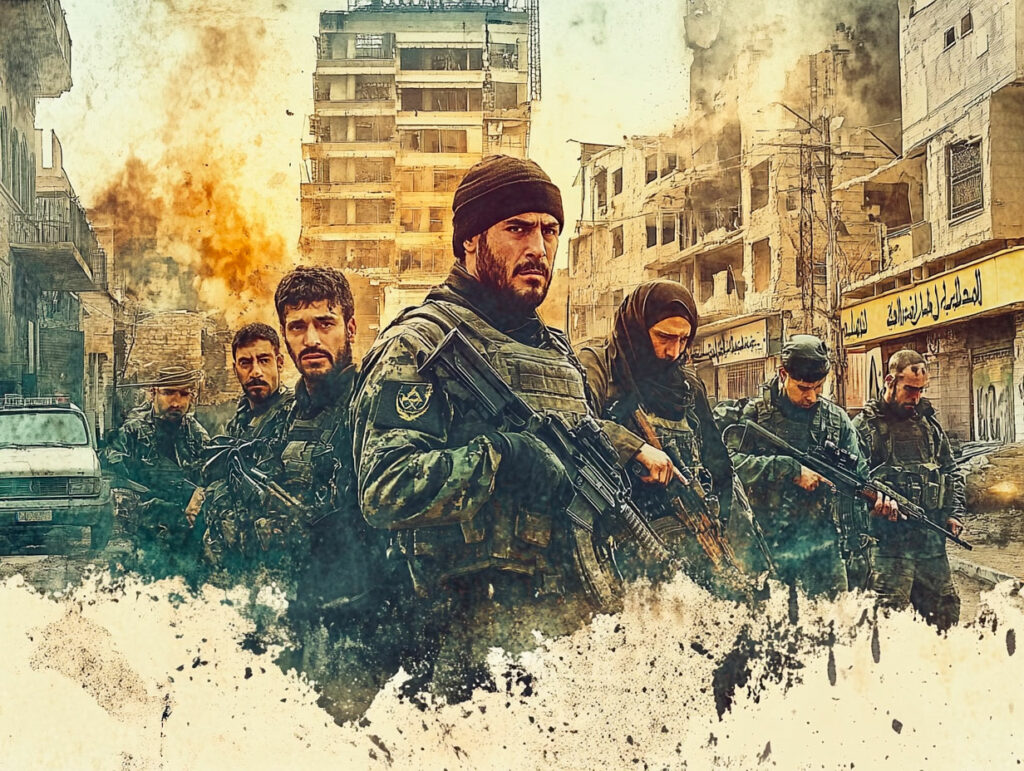
The elimination of Nasrallah and Hamas leaders has plunged these organizations into a succession crisis. Analysis of the strategic consequences.
The elimination of Hassan Nasrallah, head of Hezbollah, and several Hamas leaders, including Yahya Sinwar, has shaken up power dynamics in the Middle East. Although these groups have pre-established command structures, the disappearance of charismatic and strategic figures creates a vacuum that is difficult to fill. Internal fragmentation and the struggle for leadership threaten the stability of these organizations, weakening their ability to operate.

The impact of Hassan Nasrallah’s elimination
The figure of Hassan Nasrallah was central to Hezbollah’s organization and influence. An emblematic leader for over two decades, Nasrallah had consolidated his authority through local and international support networks. The elimination of Nasrallah by Israeli forces profoundly affected Hezbollah’s hierarchical structure, provoking internal tensions.
In theory, Hezbollah has a command structure with clear lines of succession. However, potential successors lack Nasrallah’s charisma and strategic expertise. This deficit could lead to internal rivalries. According to experts, the fragility of the leadership could weaken the organization’s cohesion and make it more vulnerable to outside influences.
Iran, a major supporter of Hezbollah, could intervene to stabilize the organization, but this would risk reinforcing the perception of foreign interference, a sore point in Lebanon where sectarian tensions remain high. Reports indicate that around 70% of Hezbollah’s financial and material support comes from Iran. Nasrallah’s death weakens this link, making the organization more dependent on external aid that could potentially be contested by internal factions.
The loss of Yahya Sinwar: a major blow for Hamas
Yahya Sinwar was a leading strategist and one of the founders of Hamas. His elimination, confirmed by DNA tests after an armed confrontation, has left the organization in a state of crisis. Sinwar was the architect of the October 2023 offensive against Israel, which claimed an unprecedented 1,000 Israeli lives.
Sinwar’s absence has intensified the succession struggle within Hamas, causing conflict between factions. Internal fragmentation weakens the organization and threatens its ability to coordinate operations. This internal division could also limit Hamas’s ability to maintain order in Gaza, home to over 2.1 million Palestinians in a territory of 365 km².
Hamas’ financial support, notably from Iran and international donations, totals some 11 billion euros. These funds are supposed to improve the lives of Palestinians, but a large proportion is often redirected to support military activities. This management of resources, combined with internal rivalries, could fuel a climate of mistrust and destabilization.
Consequences for the Palestinian population
The populations of Gaza and the West Bank, home to 2.1 million and 4.1 million Palestinians respectively, are directly affected by Hamas’ internal struggles. Since the 2023 offensive, the humanitarian situation has deteriorated. The blockade imposed by Israel, reinforced after the recent hostilities, limits access to essential goods. Some 80% of Gaza’s inhabitants depend on international humanitarian aid.
Internal tensions are weakening Hamas’s ability to manage the population’s needs. Furthermore, divisions could encourage the emergence of rival groups or dissident movements, making the region even more unstable. The inability to form a unified leadership also weakens Hamas’s ability to negotiate with Israel over the release of hostages, a sensitive issue in the current context.

Strategic implications and future prospects
Israel’s strategy of targeted elimination has weakened the leadership structures of Hezbollah and Hamas, temporarily reducing their ability to coordinate military action. However, history shows that these organizations have often managed to reconstitute themselves after significant losses. The resilience of these groups depends on their ability to avoid prolonged fragmentation and maintain popular support.
For Israel, the elimination of these leaders represents a strategic respite, but the vacuum created by the absence of leadership could also give rise to unpredictable behavior on the part of rival or non-aligned factions. The question of regional stability therefore remains open, while outside powers, notably Iran, may seek to strengthen their influence to fill the vacuum left by Nasrallah and Sinwar.
War Wings Daily is an independant magazine.